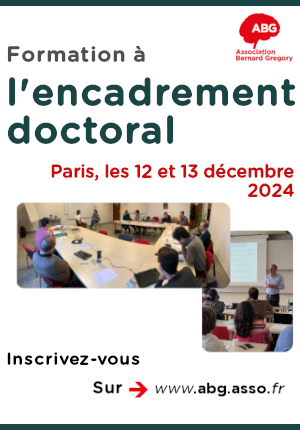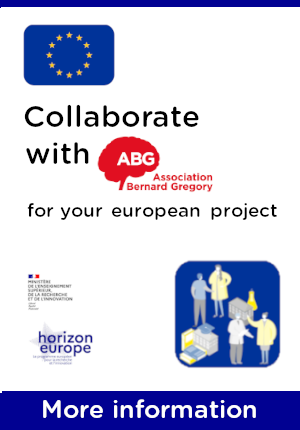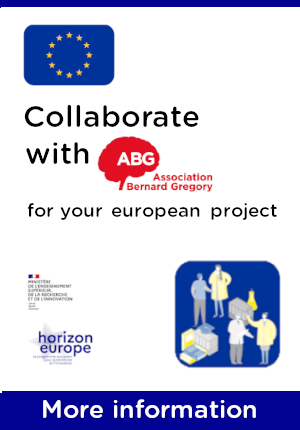Post-doc - Topical formulations for the decontamination of injured skin and wounds exposed to radionuclides (ref PsD SAN 24-4))
| ABG-126214 | Job | Any |
| 2024-10-10 | Fixed-term 24 Month | > €35,000 and < €45,000 annual gross |
- Biochemistry
- Biotechnology
Employer
IRSN is the public expert in nuclear and radiological risk research and assessment.
IRSN is a public industrial and commercial establishment (EPIC) whose missions are defined by law n°2015-992 of August 17, 2015 relating to the energy transition for green growth and whose organization and governance are specified in decree n°2016-283 of March 10, 2016.
IRSN is placed under the joint supervision of the ministers in charge of ecology, research, energy, health and defense.
The post-doctoral position will be led by the Institut Galien Paris-Saclay (IGPS) wich is a major international player in nanomedicine research. Its objective is to develop nanotechnologies to deliver drugs to target cell populations and modulate their effects or for in vitro and in vivo diagnosis. And by the Laboratory of Radiochemistry and Imaging (LRSI) wich is part of the Research Department on the Health and Biological Effects of Ionizing Radiation (SESANE) of the Health Department of IRSN, which develops analytical methods in radiochemistry and conducts research on the speciation and biodistribution of radionuclides from the cellular to the organism level, and then develops medical countermeasures in case of skin or internal contaminations due to radionuclides.
The position holder will be hired by IRSN and the research will be performed partly at IGPS in Orsay (91) and at IRSN in Fontenay-aux-Roses (92). Occasional trips in France and abroad are expected. The position is eligible for remote work.
Website :
Position and assignments
Research project “Topical formulations for the decontamination of injured skin and wounds exposed to radionuclides”
In response to the call for proposals launched by the European Defence Fund, the RESILIENCE Framework Partnership was set up, aiming at building a European collaborative ecosystem against current or future CBRN threats (Chemical, Biological, Radiological, Nuclear). RESILIENCE brings together military medical institutes, research institutes, universities, research and technology organisations (RTOs), hospitals, industries, mid-caps and SMEs. One hundred European partners and their experts in NR (Nuclear, Radiological) threats, will serve different R&D projects, in dosimetry, diagnosis and medical countermeasure. Within this framework, IGPS and IRSN will contribute to the project INDECRAD by developping new decorporating and decontaminating agents to improve care of soldiers exposed to NR threats. Among the complementary approaches to improve radionuclide decontamination, we chose to evaluate the efficacy of topical formulations (i.e., hydrogels and texturing gels) containing chelating drugs such calixarene or hydroxypyridinone (HOPO) to treat injured skin or wounds contaminated with radionuclide such as U, transuranics, Cs or Co. Such pharmaceutical strategy proved to be effective in previous developments to decontaminate skin exposed ex vivo to uranium (Belhomme-Henry et al., 2014; Phan et al., 2013), transuranic elements (Tazrart et al., 2018) or nanomaterials (Tarantini et al., 2024)
This project is led by the University of Latvia and has six partners on board: IRSN, CNRS, CEA, the French Ministry of Defense, Bundeswehr Institute of Radiobiology (Germany) and University of Brno (Czech Republic).
Mission
The position holder will contribute to the formulation and physicochemical characterisation of emulsions and hydrogels made of hydrophilic or amphiphilic chelating agents at IGPS, and to the assessment of their effectiveness in decontaminating damaged skin or wounds exposed ex vivo to actinides, cesium, or cobalt isotopes using automated Franz diffusion cells systems, at IRSN. This includes, but is not limited to:
- Implementing different formulation methods to incorporate chelating agents (HOPO, calixarene, etc...) in pharmaceutical forms that are relevant for topical applications on damaged skin or wounds;
- Characterizing the granulometry (in case of dispersed systems), the rheological properties and the stability of the pharmaceutical forms;
- Performing ex vivo skin diffusion studies of the radioisotopes (U, Pu, Am, Cs, Co) through murine, porcine or human skins using Franz cells with or without decontamination treatments;
- Analyzing the radionuclides in the different compartments and samples using analytical techniques (ICPMS);
- Analyzing the results of experiments and writing articles for publication in peerreviewed journals, as well as research reports for internal or external purpose;
- Preparing and presenting talks and poster presentations at internal and external seminars and meetings when requested and approved;
References
Beladjine M., Albert C., Sintès M., Mekhloufi G., Gueutin C., Nicolas V., Canette A., Trichet M., Tsapis N., Michel L., Agnely F., Huang N (2023), “Pickering emulsions stabilized with biodegradable nanoparticles for the co-encapsulation of two active pharmaceutical ingredients”, International Journal of Pharmaceutics, 637, 122870. DOI: 10.1016/j.ijpharm.2023.122870
Belhomme-Henry, C., G. Phan, N. Huang, C. Bouvier, F. Rebière, M. Agarande and E. Fattal (2014). "Texturing formulations for uranium skin decontamination." Pharmaceutical Development and Technology 19(6): 692-701. DOI: 10.3109/10837450.2013.823991.
Jaudoin C., Maue Gehrke M., Grillo I., Cousin F., Ouldali M., Arteni A.A., Ferrary E., F. Siepmann F., Siepmann J., Simelière F., Bochot A., Agnely F. (2023) “Release of liposomes from hyaluronic acid-based hybrid systems: Effects of liposome surface and size”, International Journal of Pharmaceutics, 648, 123450. DOI: 10.1016/j.ijpharm.2023.123560
Phan, G., N. Semili, C. Bouvier-Capely, G. Landon, G. Mekhloufi, N. Huang, F. Rebière, M. Agarande and E. Fattal (2013). "Calixarene cleansing formulation for uranium skin contamination." Health Physics 105(4): 382-389.DOI: 10.1097/HP.0b013e318298e8d3.
Tarantini, A., E. Jamet-Anselme, S. Lam, V. Haute, D. Suhard, N. Valle, V. Chamel-Mossuz, C. Bouvier-Capely and G. Phan (2024). "Ex vivo skin diffusion and decontamination studies of titanium dioxide nanoparticles." Toxicology in Vitro 101: 105918.DOI: https://doi.org/10.1016/j.tiv.2024.105918.
Tazrart, A., M. A. Bolzinger, S. Lamart, S. Coudert, J. F. Angulo, V. Jandard, S. Briançon and N. M. Griffiths (2018). "Actinide-contaminated Skin: Comparing Decontamination Efficacy of Water, Cleansing Gels, and DTPA Gels." Health Physics 115(1): 12-20.DOI: 10.1097/hp.0000000000000814.
Geographic mobility:
Telework
Starting date
Profile
The postdoctoral fellow shall have:
- PhD degree in physicochemistry, pharmaceutical technology, pharmacology, biology, chemistry or a relevant discipline from a recognized university
- Comprehensive background and experience in one or more of the following areas: colloids, (nano)emulsions, hydrogels or dispersed systems formulation and characterisation (rheology, microscopy) (Beladjine et al., 2023; Jaudoin et al., 2023)
- Experience in skin physiology, radiobiology, radiotoxicology, in vitro skin diffusion study, Franz diffusion cells systems or active ingredients analytical methods will be considered as an asset
- Demonstrated ability to publish research results as a lead author in peerreviewed scientific literature
- Effective communication skills to present results of research as demonstrated by a record of conference or other oral presentations in English
- Demonstrated high organisation skills, interpersonal skills and ability to work as a part of a multidisciplinary and dynamic team
Vous avez déjà un compte ?
Nouvel utilisateur ?
Get ABG’s monthly newsletters including news, job offers, grants & fellowships and a selection of relevant events…
Discover our members
 CESI
CESI  ADEME
ADEME  SUEZ
SUEZ  Aérocentre, Pôle d'excellence régional
Aérocentre, Pôle d'excellence régional  Institut de Radioprotection et de Sureté Nucléaire - IRSN - Siège
Institut de Radioprotection et de Sureté Nucléaire - IRSN - Siège  Tecknowmetrix
Tecknowmetrix  Groupe AFNOR - Association française de normalisation
Groupe AFNOR - Association française de normalisation 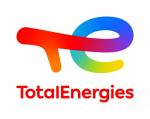 TotalEnergies
TotalEnergies  Généthon
Généthon 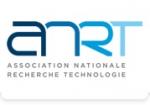 ANRT
ANRT  MabDesign
MabDesign  Ifremer
Ifremer 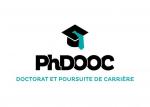 PhDOOC
PhDOOC  Nokia Bell Labs France
Nokia Bell Labs France  MabDesign
MabDesign  Laboratoire National de Métrologie et d'Essais - LNE
Laboratoire National de Métrologie et d'Essais - LNE  ONERA - The French Aerospace Lab
ONERA - The French Aerospace Lab  Institut Sup'biotech de Paris
Institut Sup'biotech de Paris  CASDEN
CASDEN

